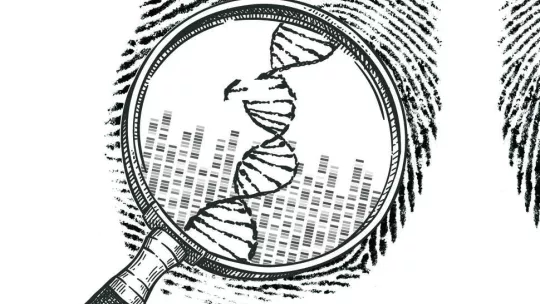Images
A genomic analysis of lung cancer in people with no history of smoking has found that most of these tumours arise from the accumulation of mutations caused by natural processes in the body. Conducted by an international team led by researchers at the National Cancer Institute (NCI), part of the National Institutes of Health (NIH), and involving the participation, among others, of the IRB Barcelona Biomedical Genomics group, led by ICREA researcher Dr. Núria López-Bigas, this study describes for the first time three molecular subtypes of lung cancer in people who have never smoked.
These insights will help unlock the mystery of how lung cancer arises in people who have no history of smoking and may guide the development of more precise clinical treatments. The findings were published in Nature Genetics on 6 September, 2021.
“What we’re seeing is that there are different subtypes of lung cancer in never smokers that have distinct molecular characteristics and evolutionary processes,” said epidemiologist Maria Teresa Landi, M.D., Ph.D., of the Integrative Tumor Epidemiology Branch in NCI’s Division of Cancer Epidemiology and Genetics, who led the study, which was done in collaboration with researchers at the National Institute of Environmental Health Sciences, another part of NIH, and other institutions. “In the future we may be able to have different treatments based on these subtypes.”
Lung cancer is the leading cause of cancer-related deaths worldwide. Every year, more than 2 million people around the world are diagnosed with the disease. Most people who develop lung cancer have a history of tobacco smoking, but 10% to 20% of those with this disease have never smoked. Lung cancer in never smokers occurs more frequently in women and at an earlier age than in smokers.
Environmental risk factors, such as exposure to secondhand tobacco smoke, radon, air pollution, and asbestos, or having had previous lung diseases, may explain some lung cancers among never smokers, but scientists still don’t know what causes most of these cases of cancers.
In this large epidemiologic study, the researchers used whole-genome sequencing to characterise the genomic changes in tumor tissue and matched healthy tissue from 232 never smokers, predominantly of European descent, who had been diagnosed with non-small cell lung cancer. The tumors included 189 adenocarcinomas (the most common type of lung cancer), 36 carcinoids, and seven other tumors of various types. The patients had not yet undergone cancer treatment.
The researchers combed the tumor genomes for mutational signatures, which are patterns of mutations associated with specific mutational processes, such as damage from natural activities in the body (for example, faulty DNA repair or oxidative stress) or from exposure to carcinogens. Mutational signatures act like as a tumour’s archive of activities that led up to the accumulation of mutations, providing clues into what caused the cancer to develop. A catalogue of known mutational signatures is now available, although some signatures have no known cause. In this study, the researchers discovered that most of the tumour genomes of never smokers bore mutational signatures associated with damage from endogenous processes, that is, natural processes that occur inside the body.
As expected, because the study was limited to never smokers, the researchers did not find any mutational signatures that have previously been associated with direct exposure to tobacco smoking. Nor did they find those signatures among the 62 patients who had been exposed to secondhand tobacco smoke. However, Dr. Landi cautioned that the sample size was small and the level of exposure highly variable.
“We need a larger sample size with detailed information on exposure to really study the impact of secondhand tobacco smoking on the development of lung cancer in never smokers,” Dr. Landi said.
The genomic analyses also revealed three novel subtypes of lung cancer in never smokers, to which the researchers assigned musical names based on the level of “noise” (that is, the number of genomic changes) in the tumors. The predominant “piano” subtype had the fewest mutations; it appeared to be associated with the activation of progenitor cells, which are involved in the creation of new cells. This tumour subtype grows extremely slowly, over many years, and is difficult to treat because it can have many different driver mutations.
The “mezzo-forte” subtype had specific chromosomal changes as well as mutations in the growth factor receptor gene EGFR, which is commonly altered in lung cancer, and exhibited faster growth. The “forte” subtype showed whole-genome doubling, a genomic change often seen in smokers with lung cancers. This subtype of tumor also grows quickly.
“We’re starting to distinguish subtypes that could potentially have different approaches for prevention and treatment. For example, the slow-growing piano subtype could give clinicians a window of opportunity to detect these tumors earlier when they are less difficult to treat. In contrast, the mezzo-forte and forte subtypes have only a few major driver mutations, suggesting that these tumors could be identified by a single biopsy and could benefit from targeted treatments, said Dr. Landi.
A future direction of this research will be to study people of different ethnic backgrounds and geographic locations, whose exposure history to lung cancer risk factors is well described.
“We’re at the beginning of understanding how these tumors evolve,” Dr. Landi said. "This analysis shows that there is heterogeneity, or diversity, in lung cancers in never smokers."
Stephen J. Chanock, M.D., director of NCI’s Division of Cancer Epidemiology and Genetics, noted, “We expect this detective-style investigation of genomic tumor characteristics to unlock new avenues of discovery for multiple cancer types.”
The study was conducted by the Intramural Research Program of NCI and the National Institute of Environmental Health Sciences.
Reference article: Zhang T, Joubert P, Ansari-Pour N, et al. "Genomic and evolutionary classification of lung cancer in never smokers." Nature Genetics. Sept 6, 2021. DOI: 10.1038/s41588-021-00920-0.
Extracted from article: “NIH study illuminates origins of lung cancer in never smokers” from the National Cancer Institute (NIH), published on https://www.cancer.gov/news-events/press-releases/2021/lung-cancer-neve…
About IRB Barcelona
The Institute for Research in Biomedicine (IRB Barcelona) pursues a society free of disease. To this end, it conducts multidisciplinary research of excellence to cure cancer and other diseases linked to ageing. It establishes technology transfer agreements with the pharmaceutical industry and major hospitals to bring research results closer to society, and organises a range of science outreach activities to engage the public in an open dialogue. IRB Barcelona is an international centre that hosts 400 researchers and more than 30 nationalities. Recognised as a Severo Ochoa Centre of Excellence since 2011, IRB Barcelona is a CERCA centre and member of the Barcelona Institute of Science and Technology (BIST).






